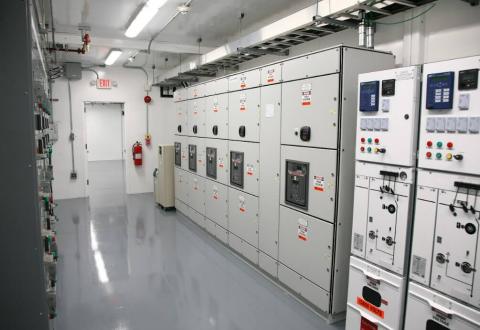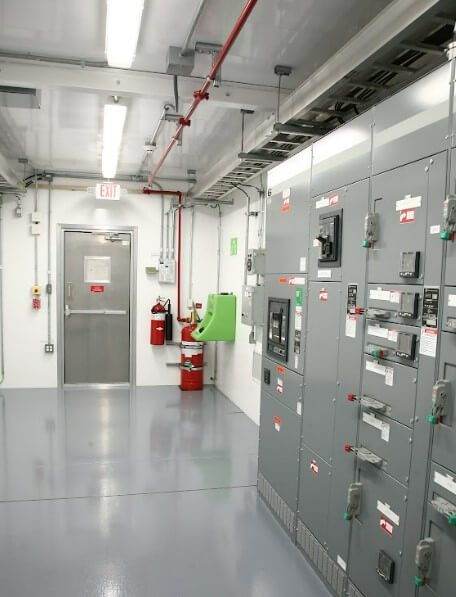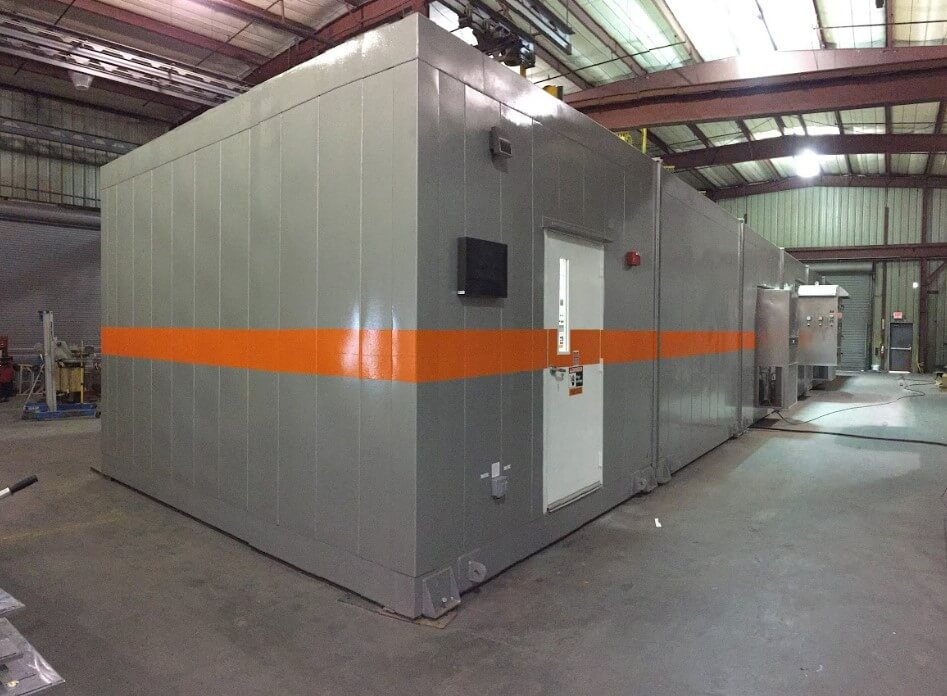
Rail infrastructure is one of the most complex systems of transportation. It consists of thousands of miles of track, signaling equipment, electrical systems, and numerous other components, all of which need to be managed efficiently to ensure the smooth and safe operation of trains. At the heart of this system are Power Control Rooms, which play a pivotal role in monitoring, managing, and controlling various aspects of rail infrastructure. These specialized facilities house sophisticated equipment and teams of professionals who oversee everything from power distribution to signaling, ensuring that the rail network operates reliably.
In this post, we will explore how Power Control Rooms function in the rail industry, their importance in maintaining infrastructure, and the ways they are helping rail operators manage an increasingly modern and digital landscape.
The Role of Power Control Rooms in Rail Infrastructure
Power Control Rooms (PCRs) are essential hubs that manage the electrical power distribution systems, signaling, and communication networks critical to rail infrastructure. They allow operators to monitor and control the flow of electricity, respond to system failures, and optimize the efficiency of the rail network.
1. Power Distribution and Management
Power is a critical element of rail operations, particularly in electrified rail networks. In such systems, trains rely on continuous electricity from overhead lines or a third rail to power their movement. Managing the flow of electricity is vital for ensuring that trains run smoothly and without interruption. Power Control Rooms are responsible for monitoring the electrical grid that serves the rail network and making real-time adjustments to balance power loads and prevent disruptions.
Power Control Rooms monitor various power substations across the network, which convert high-voltage electricity from the main grid into the lower voltages required by the rail system. Through remote monitoring and control, they can make real-time decisions, such as rerouting electricity if a substation fails or if there is a need to shut down a particular section of track for maintenance. This ensures that there are no major interruptions in service and that safety is maintained.
In regions where railways cross international borders or span long distances, Power Control Rooms can integrate systems from multiple regions, coordinating the power distribution to ensure seamless service across different power grids.
2. Managing Signaling Systems
Signaling systems are the nervous system of any rail infrastructure, providing the critical information required to control the movement of trains and maintain safe distances between them. Power Control Rooms play an integral role in ensuring that these systems function as intended.
Advanced signaling technologies, such as Positive Train Control (PTC) and European Train Control System (ETCS), rely heavily on power control to ensure smooth operations. These systems use real-time data from trackside equipment, GPS, and other inputs to automatically regulate train speeds, control signals, and monitor train movements. Power Control Rooms are responsible for ensuring that these signaling systems are powered and operational at all times.
When issues occur, such as power outages or system malfunctions, Power Control Rooms can step in to resolve problems quickly, either by diverting power from other sources or alerting maintenance teams to fix the issue. The control room’s ability to coordinate both the power and signaling systems helps maintain the safe and timely operation of the railway.
3. Communication and Coordination
Power Control Rooms are also the central hubs for communication and coordination between various departments involved in rail operations. Rail infrastructure management is a highly coordinated effort that involves multiple stakeholders, including power suppliers, train operators, maintenance crews, and emergency responders. These groups all rely on real-time information to do their jobs efficiently and safely.
In case of an emergency, such as a power outage, equipment malfunction, or a natural disaster, Power Control Rooms can quickly alert all relevant parties. They can also coordinate the restoration of service by directing crews to the site of the problem and providing them with the information they need to make repairs.
Additionally, Power Control Rooms are equipped with advanced communication systems that allow them to interface with train drivers, station personnel, and remote monitoring systems. This ensures that all personnel are kept up to date with the latest information and can react appropriately to any changes or emergencies in the rail system.

GET IN TOUCH
In a hurry? Call us at 276-285-3841
Key Components of Power Control Rooms
To understand the full scope of how Power Control Rooms manage rail infrastructure, it’s important to delve into the key components and technologies that make these control centers effective.
1. Supervisory Control and Data Acquisition (SCADA) Systems
One of the most critical tools in a Power Control Room is the Supervisory Control and Data Acquisition (SCADA) system. SCADA systems allow operators to monitor and control various elements of the rail infrastructure from a centralized location. This system collects real-time data from sensors and equipment spread across the rail network, providing operators with a clear picture of how the entire system is functioning.
SCADA systems also allow operators to remotely control various elements of the infrastructure, such as switching power sources, adjusting power flow, or even rerouting trains in the case of a breakdown. The system’s real-time monitoring capabilities also help predict potential issues before they arise, allowing for proactive maintenance and reducing downtime.
2. Remote Terminal Units (RTUs) and Programmable Logic Controllers (PLCs)
Remote Terminal Units (RTUs) and Programmable Logic Controllers (PLCs) are essential hardware components in Power Control Rooms. These devices act as the intermediary between the sensors and actuators in the field (e.g., on the tracks or at substations) and the SCADA system.
RTUs and PLCs are responsible for gathering data from the field devices and relaying it back to the control room. They also allow for remote control of equipment, such as opening or closing circuit breakers, adjusting voltage levels, or controlling the switching of signals.
RTUs and PLCs can also be programmed to execute automatic functions, such as rerouting power if a substation goes offline. This level of automation ensures that the system can continue operating smoothly, even if there is a temporary communication failure between the Power Control Room and the equipment in the field.
3. Advanced Visualization Tools
In modern Power Control Rooms, visualization tools play a key role in allowing operators to manage the rail infrastructure efficiently. These tools include high-resolution displays, geographic information systems (GIS), and 3D modeling software that provide a detailed and accurate view of the entire rail network.
With these tools, operators can quickly identify areas of concern, such as overloaded substations or malfunctioning equipment. They can also see the exact location of trains, which helps them make real-time decisions to optimize train movement and prevent bottlenecks.
Visualization tools also allow operators to simulate various scenarios, such as how the system would respond to a power outage or what the impact of a particular train rerouting would be. These simulations help operators make informed decisions and prepare for potential issues before they happen.
4. Backup Power Systems
In the event of a power outage or failure within the Power Control Room itself, backup power systems are essential to ensuring the continuous operation of the rail network. Most Power Control Rooms are equipped with uninterruptible power supplies (UPS) and backup generators that can keep the control room operational for extended periods during a power outage.
These systems ensure that critical infrastructure, such as signaling and communication networks, remains operational even during emergencies. Without these backup systems, the entire rail network could come to a standstill, resulting in delays, safety risks, and significant financial losses.
The Impact of Digitalization and Smart Technology on Power Control Rooms
As rail networks become increasingly digitalized, Power Control Rooms are evolving to incorporate new technologies and smart systems that enhance their capabilities. The integration of Internet of Things (IoT) devices, artificial intelligence (AI), and big data analytics is transforming how Power Control Rooms operate, making them more efficient, responsive, and predictive.
1. Internet of Things (IoT)
IoT devices are transforming the way Power Control Rooms manage rail infrastructure. These small, connected sensors can be placed on virtually any piece of equipment within the rail system, from substations to trackside signals, and they continuously send data back to the control room.
With IoT, Power Control Rooms can monitor the health and status of equipment in real time, predicting failures before they occur. This allows for proactive maintenance, reducing downtime and improving the overall reliability of the rail system.
2. Artificial Intelligence (AI) and Machine Learning
AI and machine learning technologies are also beginning to play a role in Power Control Rooms. By analyzing the vast amounts of data generated by IoT devices, SCADA systems, and other sources, AI algorithms can identify patterns and make recommendations to operators on how to optimize the system.
For example, AI can predict when a particular substation is likely to fail based on historical data and current conditions. It can also recommend the best course of action for rerouting power or adjusting train schedules to minimize the impact of an outage.
3. Big Data Analytics
The increasing digitalization of rail infrastructure has resulted in an explosion of data, which Power Control Rooms must manage and analyze. Big data analytics tools are essential for making sense of this information and turning it into actionable insights.
By analyzing data from across the rail network, Power Control Rooms can identify trends and patterns that help them optimize performance, improve safety, and reduce costs. These insights can be used to make real-time adjustments to the system or to inform long-term planning decisions.

GET IN TOUCH
In a hurry? Call us at 276-285-3841
Conclusion
Power Control Rooms are the nerve centers of rail infrastructure, responsible for managing everything from power distribution and signaling to communication and emergency response. As rail networks become more digitalized and complex, the role of these control rooms is becoming even more critical. By incorporating advanced technologies like SCADA systems, IoT devices, AI, and big data analytics, Power Control Rooms are helping rail operators ensure the safety, efficiency, and reliability of their networks.
As the rail industry continues to evolve, Power Control Rooms will remain at the forefront of managing the infrastructure that keeps trains running smoothly. Through their ability to monitor, control, and optimize various aspects of rail operations, these control centers play an indispensable role in modern transportation.
Products We Offer
Swartz Engineering strives to provide top-quality products to achieve our customer's needs. Our products include:
- Type 76 DC Relay
- Type 82 DC Relay
- Swartz Engineering’s Type 64 Ground Relay
- Type 32 Reverse Current Relay
- Type 150 DC
- CSM Shield Monitor
- Metal Oxide Surge Arrestors
- Transducers
- MVIS SL Slim-line Contactor
- Fully-tested Power Control Rooms
- Swartz Engineering’s Portable Substations
For nearly half a century, we have proudly led the industry in ensuring safety and efficiency. Swartz Engineering is a trusted family-owned company dedicated to providing top-notch power distribution solutions for the electrical industry. Contact us today!
